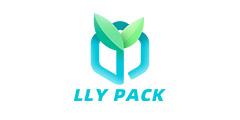At present, the adhesives used in automated cardboard production lines (or single-sided machines) at home and abroad are commonly referred to as “raw rubber”. The so-called "raw gum" refers to no adhesive force at room temperature, only when the high temperature on the paper will be heated to become mature adhesive, there is adhesion. Its production method is mainly used starch (mainly corn starch, also useful for cassava Starch, wheat starch, and other starches are made into adhesives in a two-step process. The disadvantage of this type of pure starch adhesive is that the strength and hardness of the paperboard produced is not high, and the moisture resistance is poor and water resistant.
The optimal viscosity of the automated cardboard production line (or single-sided machine) adhesive should be controlled between 45-95 seconds (measured with 4 cups), although it can be used between 30-300 seconds. In fact, manufacturers use a variety of habits, different formulations, the viscosity of the glue used is very different, the minimum viscosity of about 30 seconds, the largest in about 300 seconds. Why is the best viscosity between 45-95 seconds? This is because, if the viscosity is too small, the rubber roller is not glued, and when it is compounded on both sides, the penetration is too fast; the viscosity is too large, the fluidity is poor, the coating is uneven, and the penetration ability is not strong. Both of these conditions can cause poor adhesion. Therefore, in practical use, the viscosity of the glue should be controlled within a suitable viscosity range.
So how to adjust the viscosity of the glue? First of all, it should be understood what is the main factor affecting the size of the gel, and how it affects it. The influencing factors and impacts are as follows:
First, the amount of carrier starch (or rubber powder), the viscosity of large; carrier starch (or powder) with less, small viscosity.
Second, the total water added, the viscosity is small; total water, viscosity.
Third, the use of borax, viscosity, large amount; low viscosity, low viscosity.
Fourth, the glue, the longer the mixing time, the smaller the viscosity; the shorter the stirring time, the greater the viscosity. In addition, under the same stirring time, the faster the speed of the mixer is, the smaller the viscosity is.
5. The use of caustic soda at a level below 3.5% of the total starch has little effect on the viscosity of the glue. If the amount of caustic soda is too large, the viscosity of the glue is extremely large and forms a mass that cannot be used.
Sixth, the viscosity of starch itself is also different. Starch contains branched and amylose starches, with a large amount of amylopectin and a large viscosity; amylopectin is less in viscosity and has a smaller viscosity. Different origins and different varieties of corn, containing amylopectin different, the processed starch viscosity is very small.
In general, for a company, its equipment for making glue must be certain, and the speed of the mixer must be constant. Due to the constraints of the production line, the moisture of the glue used is basically the same, that is, the amount of total water added is unchanged, and the amount of borax is not changed. In this way, in the actual gluing process, only need to increase or reduce the amount of carrier starch, to master the appropriate mixing time, you can adjust the viscosity of the arbitrarily size, so that it is within the optimum viscosity range. If there is a change in the viscosity of the starch itself, it is only necessary to increase or decrease the amount of the carrier starch, so that the viscosity of the glue can be kept substantially constant.
When people talk about the viscosity of glue, it's easy to confuse it with good adhesion. Adhesive viscosity and adhesiveness are two different things. Viscosity and adhesion are two completely different concepts. In the case of adhesives for paperboard production lines, the viscosity of the glue does not substantially affect the bond strength over a wide range of viscosity. It is by no means the higher the viscosity of the extremity, the higher the bond strength, and vice versa. Good, that is, the viscosity of the glue is too small at high speed. Used in the production line, better adhesion.
Different papers have different requirements for the viscosity of the glue, the paper is rough, easy to penetrate, the glue with a slightly higher viscosity is used; the paper is fine and the glue with a small viscosity is used. In particular, imported “cow cardboard” uses high-permeability plastics.
In different seasons, the temperature and humidity are different, and the requirements for glue are different. If the temperature is high and dry, the total amount of water should be increased. When the temperature is low, the amount of water should be reduced. When the amount of water is changed, the amount of the corresponding carrier starch should be changed appropriately to keep the viscosity of the glue basically constant. The viscosity of the glue mentioned here is basically the same, which does not mean that the formula of the glue is not changed. On the contrary, the glue formulation should be adjusted at any time according to factors such as the paper, the season, and the viscosity of the starch itself, but it should not be used for large adjustments. . Absolutely not changing the formula is not science. Different batches of starch may have different viscosity levels. If necessary, the formula should also be adjusted by increasing or decreasing the amount of carrier starch.
In short, the plasticizers should make out the principles of plasticity and use them flexibly according to actual needs. The viscosity of the glue can be arbitrarily adjusted to meet the actual needs of cardboard production.


